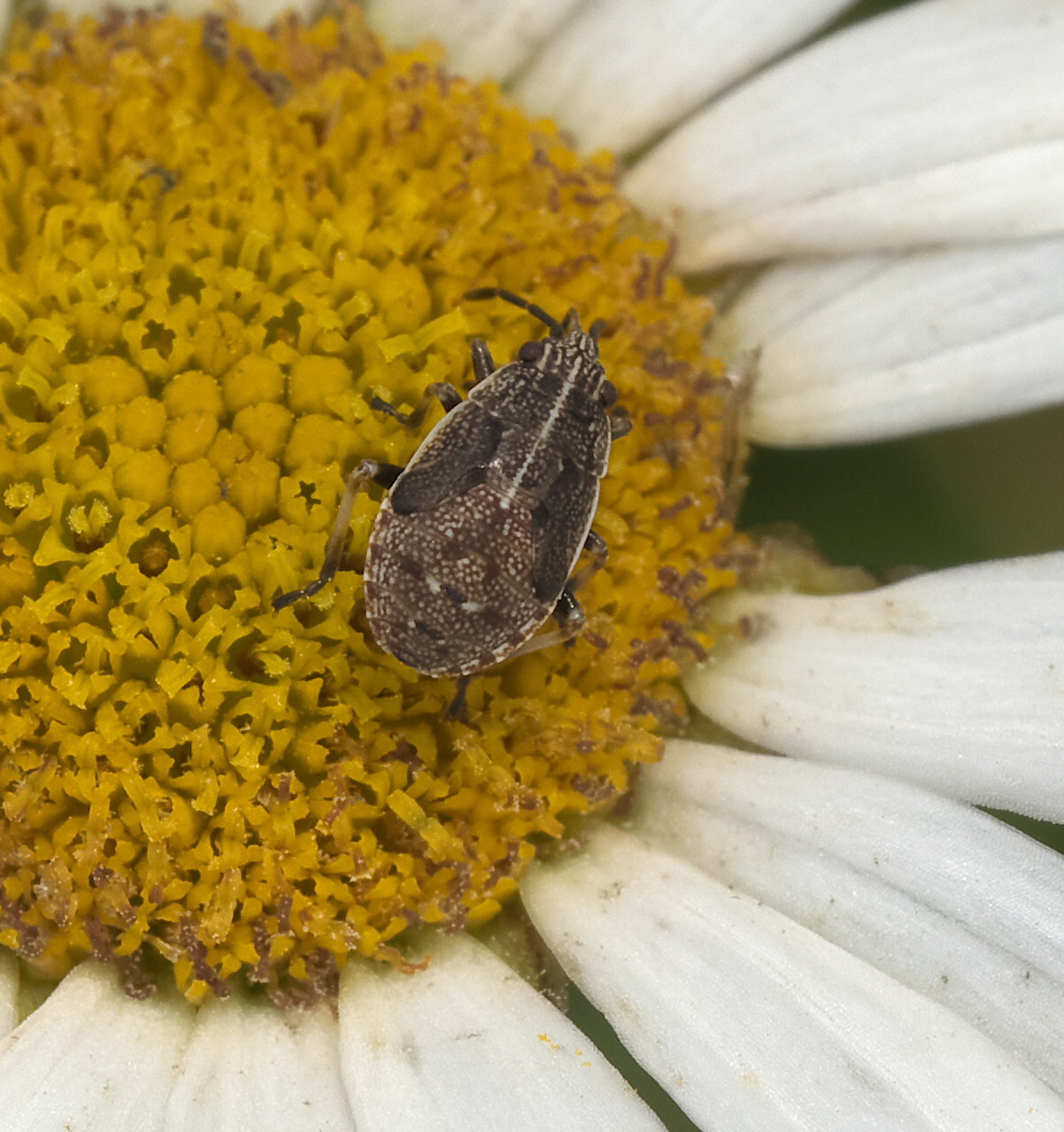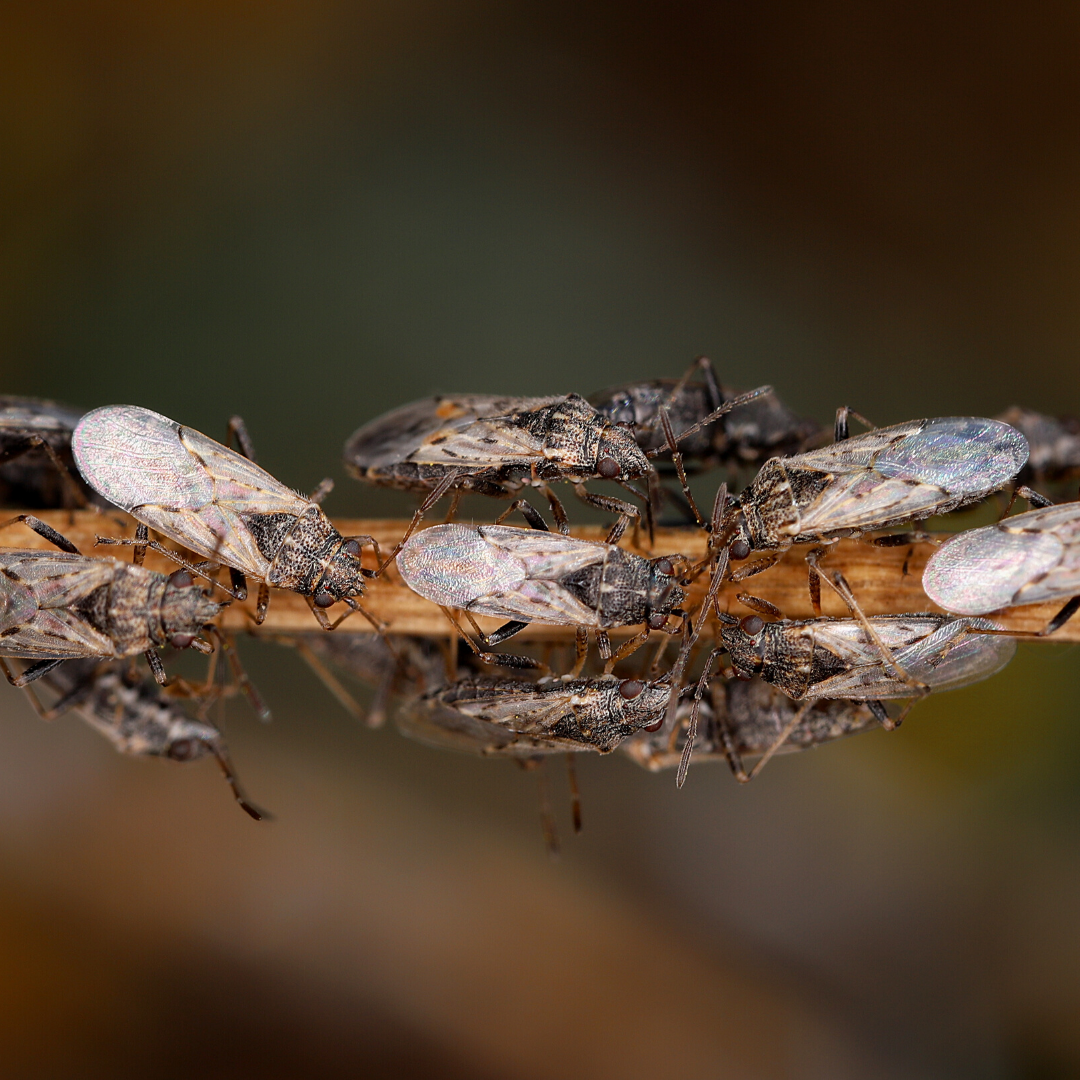

Because of a considerable overlap in generations, all stages are usually found during the summer months in Georgia. Population growth can be rapid in the hot,dry summer months. It takes 35 and 93 days at 83 oF and 70 oF, respectively, to develop from egg to adult. Females can live for 70 days, whereas males live for around 40 days. The female chinch bug is larger in size compared to the male. The adult stage can easily be identified through well-developed wings. The nymphal stages can live up to 40-50 days depending on the ambient temperature. The abdomen develops darker spots with a blue-black color, and the size is almost the same as that of the fifth nymphal stage. An occasional sixth nymphal stage may develop during the cool weather. The fifth nymphal stage is about 3 mm long. The fifth nymphal stage has distinct wing pads and is darker compared to the fourth nymphal stage. The size of the fourth nymphal stage is more than double the size of the first nymphal stage (about 2 mm long). The abdomen color gradually turns from an orange shade to dark gray. From the second nymphal stage onward, the color on all body segments gradually darkens.

The first nymphal stage is characterized by nymphs with an orange-brown head, brown thorax, and bright-orange abdomen with a distinct cream-colored band. Nymphal stages can be differentiated by variation in color and markings on their body. The life cycle of the southern chinch bug. Illustration by Faward Khan and Shimat Joseph The color of the egg changes from white when freshly deposited to orange just before hatching. Eggs are oval-shaped and elongated, ranging from 0.75-0.8 millimeters (mm)long and 0.23-0.25 mm wide. But when air temperatures are cooler, it may take 25 days at 70 oF. When air temperatures are 83 oF, eggs can hatch in nine days. A female can lay about five eggs per day, with up to 100-289 eggs produced during its lifetime. The southern chinch bug deposits eggs between the leaf blade and the stem of turfgrass in late March to September. Southern chinch bug is a true bug with distinct lifestages: egg, five nymphal stages, and adult (Figure 3). Damaged turfgrass from southern chinch bug feeding. Photo: David Shetlar, The Ohio State University, Photo: David Shetlar, The Ohio State University, Figure 2. The development of southern chinch bug in the grass can easily go unnoticed because of their small size and dark-gray color, which blends in with thatch. Populations of southern chinch bug can build up at the edges of these patches at over 100 individuals per square foot, which can kill the affected grass (Figure 2). Affected turfgrass can form yellow to brown patches that are sometimes mistaken as indicators of disease or drought stress. They feed on grass using their piercing and sucking mouthparts. Bermudagrass, centipedegrass, and zoysiagrass are also attacked by southern chinch bug. The southern chinch bug (Figure 1), Blissus insularis Barber, is an insect pest of turfgrass, especially St.


 0 kommentar(er)
0 kommentar(er)
